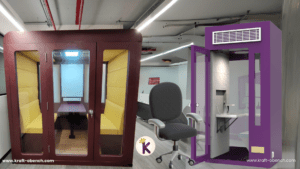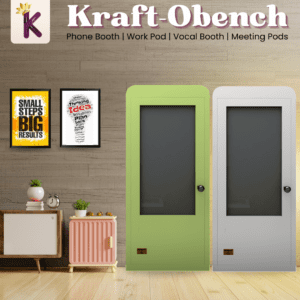If given the option, almost 99 percent of employees would choose to work from home that also amalgamating with total productivity and creativity. This can be done with the help of a work pod. And for good reason remote work allows employees to adjust their schedules, skip the daily soul-crushing commute, and focus on their job more effectively without the regular office distractions.
However, the advent of remote work has brought with it a slew of issues, many of which may be avoided. If you’re in charge of managing remote teams, these are some common blunders to avoid.
Mistake 1:
Not turning on the video
Many individuals switch off their webcams during virtual meetings. While it may appear that having your camera switched on is optional, it is not. Turning on your camera is the only way to mimic the atmosphere of an in-person meeting. Seeing each other is important for picking up nonverbal clues, which is an important aspect of effective communication.
Mistake 2:
Not Muting
Every meeting has a few silent observers who would rather be somewhere else. Though you are not required to speak just to participate, do your best to say something if you have something to say or just enjoy the silence of the work pod/soundproof office pod for home by Kraft-obench.
Mistake 3:
Late Joining
Showing up late for face-to-face meetings is a massive no-no. What makes you think virtual meetings are any different? If the speakers have to repeat what they’ve previously said, it’s a waste of everyone’s time.
It’s reasonable that you’re having some technical or personal difficulties that prevent you from arriving on time. However, rather than arriving late without informing the host, you should do so ahead of time.
Mistake 4:
Switching Tabs
It’s tempting to multitask and go to another tab when in a virtual conference. This is a certain way to get lost in the meeting. To protect yourself from losing attention and increasing your concentration, work pod has come into existence.
Mistake 5:
Using Phone
Continually staring at your phone while on a trip or at a meeting is plain impolite. For starters, it’s a frequent fallacy that people can’t tell you’re in a virtual conference since you’re on your phone. They can, though. Even if you promise yourself that you’ll only look at it for a minute, it can draw you in. Before you realize it, you’re no longer paying attention to the meeting.
Mistake 6:
Improper Usernames and Backgrounds:
For your virtual meetings, don’t make the mistake of picking a random username or backdrop. It’s OK with friends and family, but it’s not appropriate for a business situation. It should be straightforward and free of distractions.
Mistake 7:
Headphones
Headphones are your greatest buddy when working from home. They are especially important for virtual meetings since they allow you to hear as well as talk well. It’s worth investing in a pair of high-quality headphones whether you’re discussing your next LinkedIn automation plan or establishing a kindergarten curriculum. Even in a noisy atmosphere, you’ll be able to concentrate with this gadget.
If you don’t want to purchase costly headphones, you can rent soundproof office pod for home that is aesthetically manufactured by Kraft-obench.com, and then you would save a lot of time searching for costly headphones and making a thorough decision.
Summing Up
Communication and knowledge of everyone’s diverse work styles are essential for managing a remote team. Managers must know how their workers prefer to communicate, what kind of duties they love doing during the day, and when it is appropriate for them to take breaks. You may develop an environment where your team members are comfortable enough with one another that they don’t require constant monitoring.
Set expectations with your remote employees and be explicit about what they require from you as a manager so that they feel appreciated and respected while working on your project or assignment. By avoiding these frequent managerial blunders.








